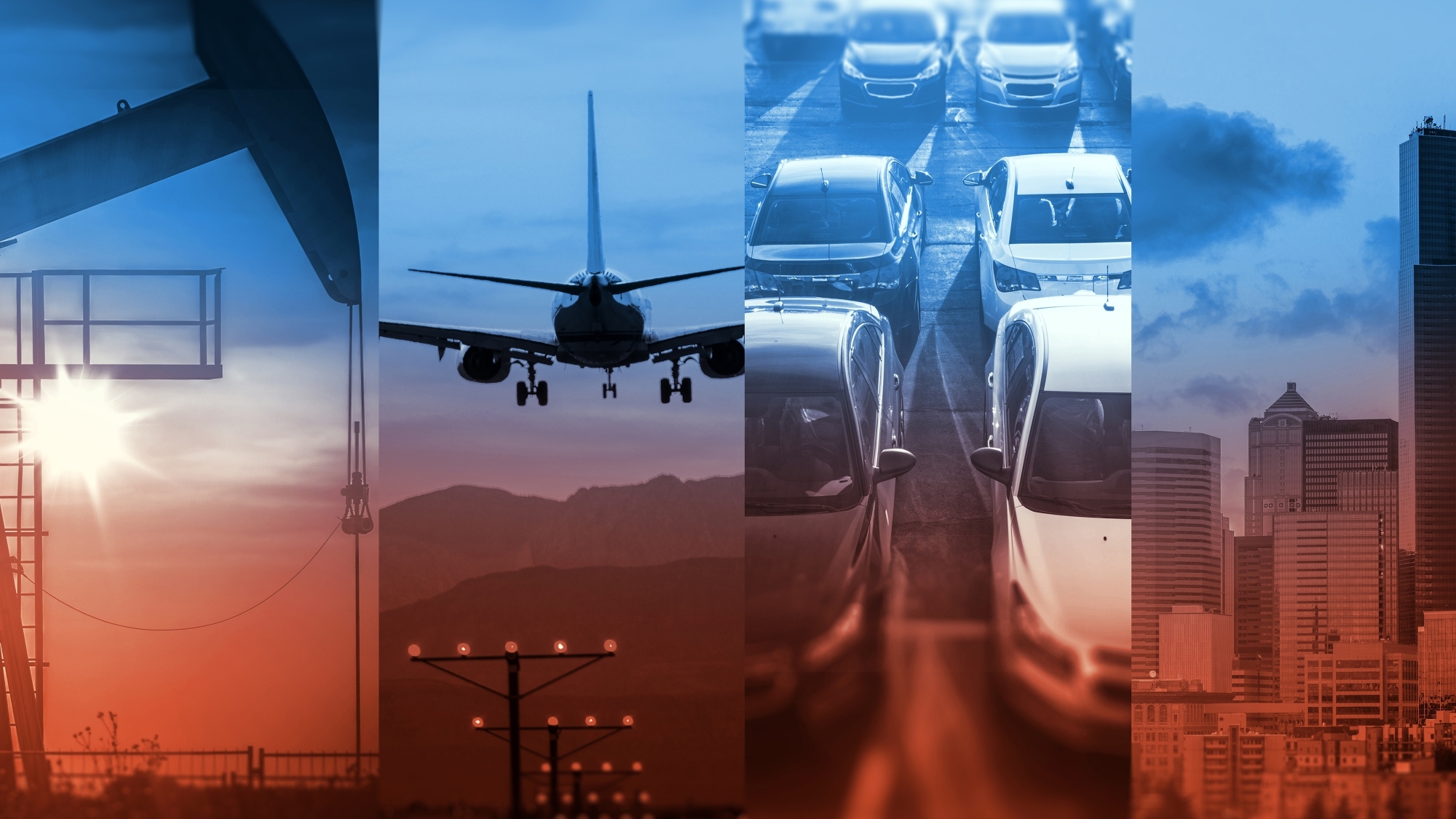Making Sense of the Post-Pandemic Economy… Will We Ever Return to “Normal”?

The first half of 2021 brought with it a wave of massive changes, as well as new disruptions that augmented the chaos surrounding the mass vaccinations in the United States. What is becoming increasingly clear is that the US economy will not go back to a “normal” pre-pandemic state, but that we have set off a number of triggers that have changed the way we work and operate supply chains permanently. In this blog, I reflect on just a few of the issues we are seeing today, and what they might mean for the remainder of 2021… and beyond.
The surge in post-pandemic spending and travel is unprecedented, and has caught many airlines and manufacturers by surprise. After working from home for more than a year, consumers are fed up, and are flocking to national parks and holiday locations in droves, packing airports and airplanes, and spending more than ever with their government checks. When there is a sudden surge in demand, and supply cannot keep up… well – you guessed it. Inflation is the result. Interestingly, many producers I’m speaking with are hesitant to raise prices, but at some point, prices will indeed rise. The Fed is steadfastly refusing to acknowledge that prices are rising, despite the Consumer Price Index jumping by 5%, but the real driver will be in the industrial prices monitored by the Producer Price Index. Oil is just part of this equation, but other critical (but less famous) index prices are cluing people into the fact that industrial prices ultimately impact consumer prices. This is not a simple 1 to 3 percent price increase – it is a major tectonic shift in the cost of material inputs. The longer this situation continues, it will eventually become baked into the cost of doing business. This is not a transitory situation…

Several factors are going to drive this. For containerized imports, I’ve already spoken to the major container shortages, the shutdown of the Chinese port in Shenzhen, and the longer dwell times in ports, that is resulting in container prices jumping to $6300 and sticking there. This is driving up costs of imports from China. But this is only part of the story.
Let’s start with resins. A few months ago, I wrote about the massive freeze that hit the petrochemicals industry, and the resulting shortages in polypropylene and polyethylene that resulted. This was soon forgotten by most people… unless you are a buyer of resins, packaging material, and other inputs into manufactured products. Resin prices spiked, but continued to stay high, as there were massive hits taken by the plants on the Louisiana cost. Interestingly, resin prices are sky high in North America and Europe, but much lower in Asia – a sign of a truly regionalized market. This is due to the lack of demand for these products in Asia. One might think this is an arbitrage opportunity, but wait…. you need to put resin on a ship, and there is no guarantee you can find a ship to get it over here, due to the container shortage! European prices are also sky high.
The freeze was a major incident. It took production capacity out for 30-45 days for many polypropylene plants, while consumers are buying products left and right. Many of the plants were damaged by the freeze, and replacing customized parts for these factories is not easy. There are challenges with getting these parts produced, as well as shipping them to the plant. In a normal emergency (e.g. a hurricane) it might take 21 takes to overhaul (“turnaround”) a plant, but in this case it is taking 30-45 days to get these plants back online, which is disrupting production and causing massive backlogs. Now, just imagine what happens if these plants are hit by a hurricane! We are going into hurricane season in August, but it seems to have started early with Edna…
A lot of the poly production goes to automotive companies, who are first in line to gobble up production. Another problem is that polypropylene is a by-production of gasoline refining. During COVID, people were driving less, and consumed less gasoline…. so inventories of poly necessarily dropped as well. As a result, prices have gone up, and have doubled overnight to $1.25 a pound. An expert I spoke with noted that “if we could get 4 quiet months, we could rebuild inventories again! But it is like Murphy’s Law – we are going into hurricane season, and anything that could go wrong seems to be going wrong! If a hurricane hits the Louisiana coast, we could see some devastating effects.”
In hindsight, looking back to March 2020 – should industry have shut down and sent people home? Looking back, was it a mistake that the economy would completely shut down, or that when people went home, they would not continue to shop online, and jump into home improvement projects? Perhaps. Could anyone have foreseen the massive labor shortages that occurred once the economy re-opened so quickly after the vaccinations? Oil has no business being at $75/bbl… so if oil prices fall will that limit some of the inflation on the petrochemical side (since plastics are coming out of a barrel of oil)? Will the labor shortages continue to impact the service economy, including truck driver shortages? Will people really be going back to work, and what will happen to commercial real estate prices? Could automation (think of kiosks at your local MacDonald’s) take the sting out of labor shortages and increased wage rates? Could a resurgence in the Delta virus lead to other regional shutdowns?
There are so many different factors at play in today’s environment, that it may well be impossible to predict exactly what will happen. In general, I believe that these shortages and supply chain bottlenecks will continue through to the end of 2022, but that these issues will eventually normalize and return to a stable state. What that new state will look like is certain to be different from what we know existed in the past…


